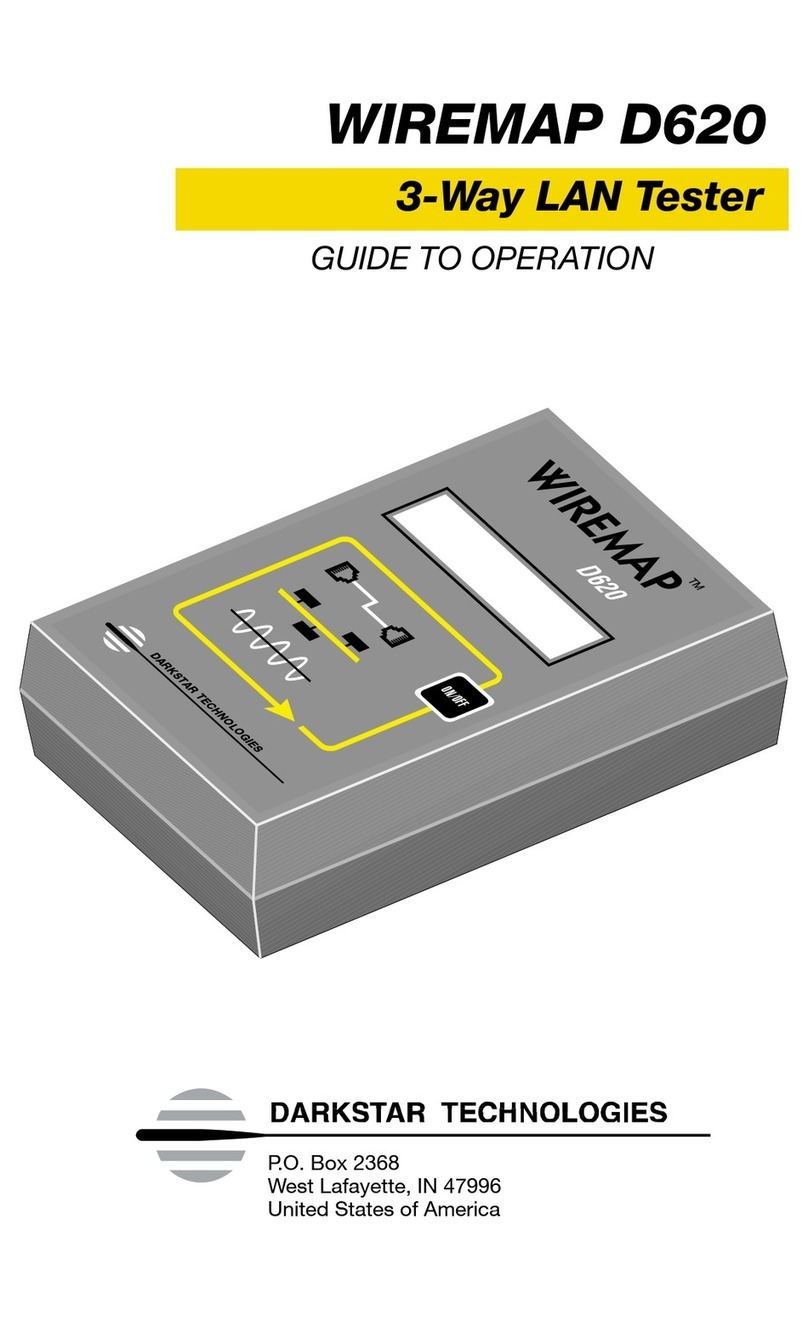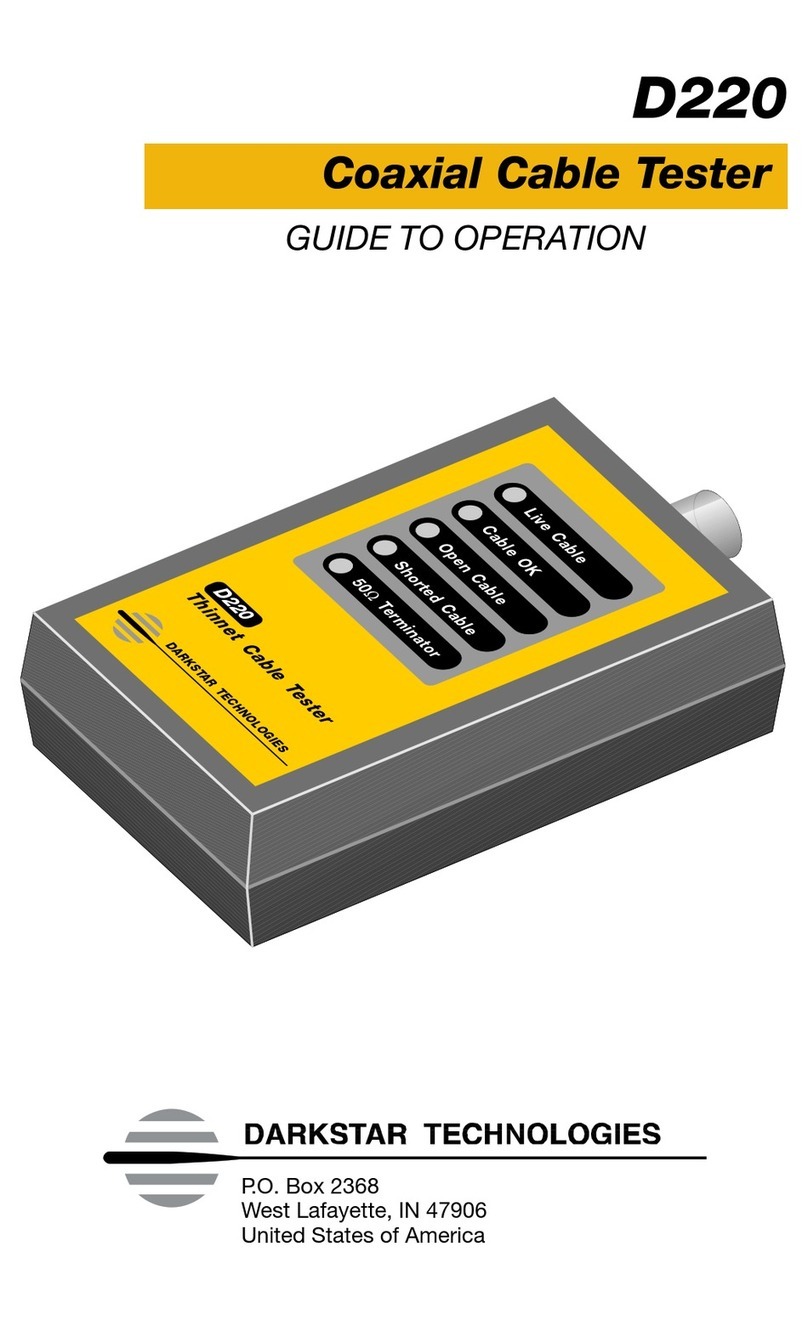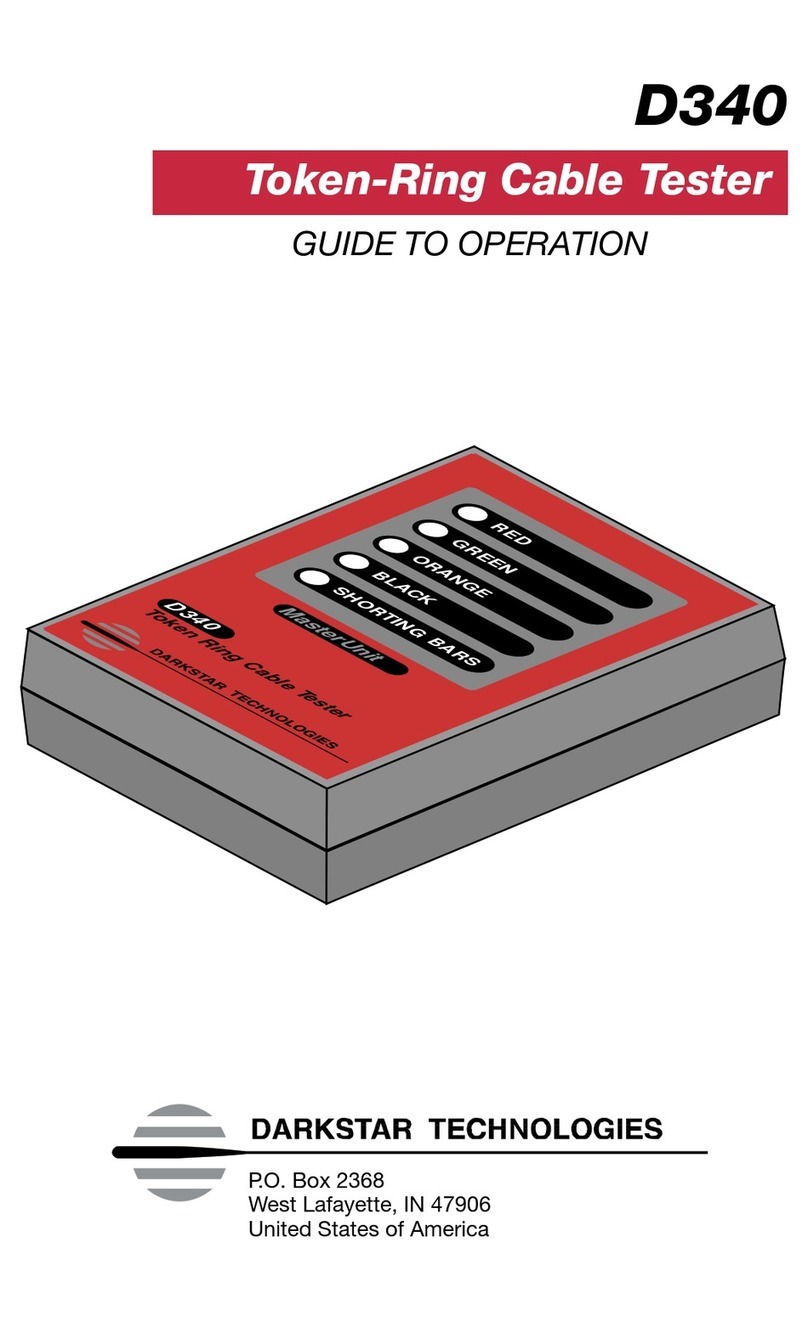
Features
The D230 is a simple, low-cost approach to testing coaxial cables for use in 75
Ohm Cable TV systems. It’s easy to use and can fit easily in your pocket or tool
kit. The D230 performs five different tests on your coax and displays the status
using LEDs. The two-piece design allows users to test cables either before or
after installation, and a toner feature helps you to trace out your cable runs.
Operation
Your D230 is turned on using the slide switch on the right hand side of the tester.
With nothing connected, the OPEN CABLE LED will light. If the D230 LEDs appear
dim or they fail to function, simply replace the 9-volt alkaline battery in the rear of
the tester.
When you connect the D230 to a coax cable, it first checks to see if the cable is
“live” by looking for an RF signal on channel 3. If a signal is seen, the LIVE
CABLE LED will light and no further tests will be performed.
Note: If the other end of the cable is connected to an RF source (VCR, CATV
amplifier etc.) which is weak or turned off, the D230 will most likely interpret that
as a SHORT condition. Depending on the RF signal strength, you may see the
indicators alternate between SHORT and LIVE when connected to a live cable.
If the cable is “open” (or unconnected) and no terminators are seen, then the
OPEN CABLE LED will light and an audible tone is injected that can be traced
using any standard inductive probe/amplifier.
If the cable or one of the F connectors is shorted, then the SHORTED CABLE LED
will light.
The CABLE OK LED will light if the cable’s continuity is good and the D230 remote
terminator is seen at the other end of the cable.
Note: The D230 remote terminator is simply a 50 Ohm terminator which is
recognized by the D230 and used for testing purposes only. It should not be
confused with the 75 Ohm terminators that are normally used in CATV systems.
The 75 Ohm terminators themselves may be tested by simply screwing one into
the D230. If they are within 5% of 75 Ohms, then the 75ΩTERMINATOR LED will
light.
If any unusual resistance conditions are seen that don’t match one of the
scenarios described above, then the OPEN CABLE and the SHORTED CABLE LEDs
will light together. This suggests that some fault exists that the D230 cannot
identify and may require the use of a more sophisticated tester.

























